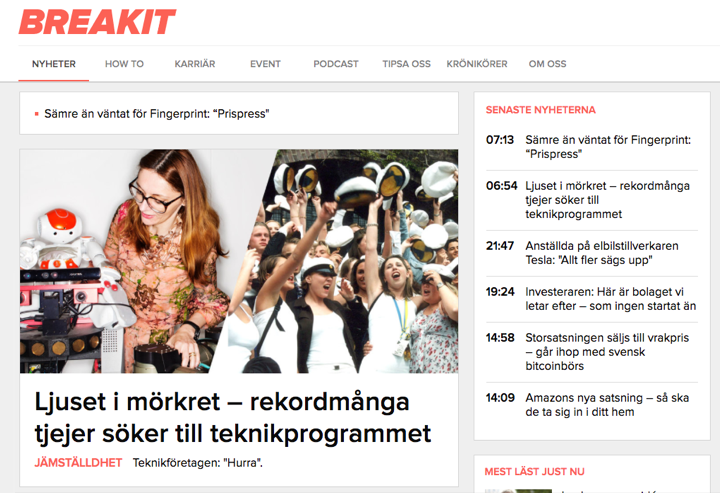The news site Breakit, which in a short time become the center for news in tech, digital and startups in Sweden, has moved its website to Rackfish. The move itself took place in August after evaluation and discussions from both budget and technical perspective.
Since spring, Rackfish is the main sponsor of Breakit’s popular podcast that is published every week.
Breakit has chosen to buy the technology from Rackfish to manage the site itself internally in the future as well.
Olle Aronsson at Breakitdescribed in the podcast the actual process during the procurement with the words: “Very, very trustworthy. It was incredibly nice, partly to get a clear quote where you saw what each part cost itself and could choose to remove and add “.

The Breakit solution
The platform Breakit bought from Rackfish is built on the well-balanced standard server that the absolute majority chooses. Some extra power in the form of CPU, memory, and storage is necessary for such a heavy and well-visited site. Backups are moved to Rackfish secondary data centers for secure offsite storage. Perhaps the best feature is that you have chosen Rackfish high-availability servers. With the feature “high availability”, you have reserved space prepared in case the server itself goes down, within a few minutes, Breakit then starts up on another hardware, completely automatically!

Result of the Breakit server move
At Rackfish are all servers virtual, but should not be confused with less powerful VPSs. Rackfish servers, on the contrary, are a perfect alternative to physical servers, but with significantly better operational reliability.
Before the move, the performance of the previous server was measured for several months via a detached measurement tool that downloaded Breakit’s home page with a regular browser (Chrome) and was measured every step of the process. With much measurement data you can filter out temporary variations (such as a period of high pressure on the server or an update of the site).
Directly in connection with the move, one could see that the loading times for the visitors dropped compared to how it had looked like the months before. Despite a lower configuration, Rackfish servers still delivered more performance to the visitors, although the web page that was delivered was actually larger when measuring the result (a news site like Breakit varies all the time in size, as new content comes in).
The end result after the move, measured against a week earlier when the site “weighed a little less” and performance had been lowered, showed how Rackfish Standard server delivered pages 10-15% faster and the time for the browser to start drawing the web page (i.e the time it takes for the server to spit something out) improved by 40%.











